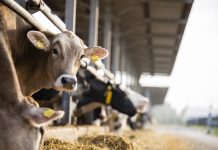A new report from the Norwegian Institute of Bioeconomy Research (NIBIO) assesses a proposed sales quota for recycled phosphorus in fertilisers, highlighting potential benefits for market growth but also significant implementation challenges
A new assessment from the Norwegian Institute of Bioeconomy Research (NIBIO) has provided a sobering reality check on a proposed “sales requirement” for recycled phosphorus in agricultural fertilisers. While intended to combat Norway’s growing phosphorus surplus and encourage sustainable practices, the report, commissioned by the Norwegian Ministry of Agriculture, suggests the policy may be difficult to implement and could have unintended negative consequences.
Addressing a national phosphorus surplus
Norway is currently facing a situation where the amount of phosphorus in circulation exceeds the needs of its agricultural sector. This surplus stems primarily from livestock manure, but also from sewage sludge, food waste, and fish waste. This trend is expected to continue due to stricter regulations on waste management and growth in industries like aquaculture. The proposed sales quota—which would mandate that a specific percentage of all phosphorus sold by distributors be from recycled sources—aims to create a viable market for these recycled materials, thereby reducing the surplus and mitigating environmental pollution.
Availability and market challenges
According to NIBIO’s analysis, the biggest obstacle to the quota’s success is the current lack of suitable, high-quality recycled phosphorus products in Norway. The report highlights that domestic technologies for processing waste into fertiliser are still in their infancy, and access to raw materials is often uneven. This could compel distributors to meet the quota by importing cheaper, foreign recycled products, thereby failing to address Norway’s own surplus and potentially benefiting regions with no similar environmental concerns.
The report also notes that recycled fertilisers are often at a competitive disadvantage. They typically have higher production costs, and some, like organic fertilisers, have variable nutrient content and require bulkier application methods, making them less attractive to farmers. The NIBIO study suggests that distributors would likely have to absorb these costs, either by taking a loss or by increasing the price of mineral fertilisers. This, in effect, would transfer the financial burden to farmers who do not contribute to the phosphorus surplus, contradicting the “polluter pays” principle.
Unintended consequences and alternatives
Beyond the market and logistical issues, the NIBIO assessment raises concerns about potential unintended consequences. The report questions whether a quota might encourage livestock intensification to generate more raw material for recycling or whether it might simply result in a surge of fertiliser imports, undermining the policy’s core objectives.
NIBIO concludes that while a sales quota could play a role, it is not a prerequisite for improving Norway’s phosphorus management.
The report’s authors, including Anne Falk Øgaard and Valborg Kvakkestad, argue that existing and planned regulations—such as stricter limits on phosphorus application and the ban on landfilling organic waste—are already driving increased recycling and more efficient resource use. The report recommends that any quota must be introduced cautiously, starting at a realistic level that can be met by available products, and should only be scaled up as the domestic supply chain matures.











